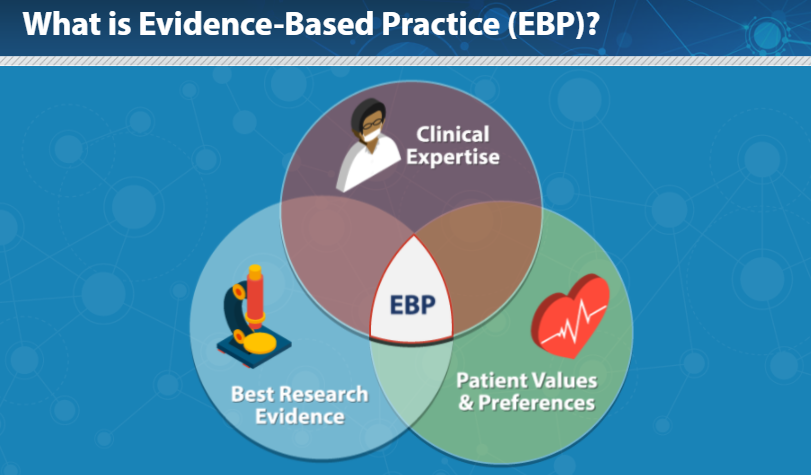Evidence Based Practice (EBP)
Introduction to Evidence Based Practice (EBP)
You are currently in the module on "Evidence Based Pracice (EBP)" in a larger tutorial. Each research tutorial includes modules of topics related to the overall tutorial learning objectives. Please go through all the pages in this module by clicking on the “Next” button on the bottom of the page in order to progress. If you would like to track your progress, be sure to log in with your UNCG credentials at the top right of the module. Each module includes Quick Checks on every page. These Quick Checks do not produce a certificate; they are optional and do not track your progress. Certificates are created by completing a whole tutorial (not one module), so be sure to complete all the modules within a tutorial in order to generate a certificate. You can also take a screenshot of your progress page.
UNCG Libraries Research Tutorials Help
Time needed to complete this module: 20 minutes
Learning Objectives:
- Define evidence based practice in relation to research, particularly health science research.
- Develop search strategies based on evidence based practice, PICO, library databases, and levels of evidence.
Evidence based practice (EBP) is crucial to research, but particularly health science research. Evidence based practice is defined as the "use of current best evidence in making decisions about the care of individual patients...integrating individual clinical expertise with the best available external clinical evidence from systematic research."
Sackett DL, Rosenberg WMC, Gray JAM, Haynes RB, Richardson WS. Evidence based medicine: what it is and what it isn’t. BMJ 1996;312(7023):71-72. http://www.bmj.com/content/312/7023/71

Image from "Introduction to Evidence-Based Practice", Duke University Medical Center Library & UNC Chapel Hill Health Sciences Library
This module is adapted from other EBP tutorials, such as:
Quick Check: